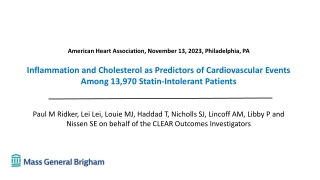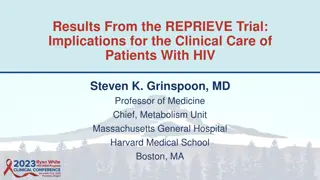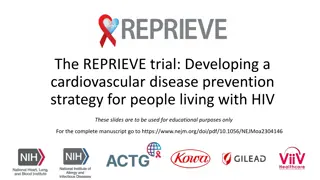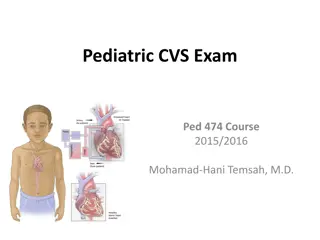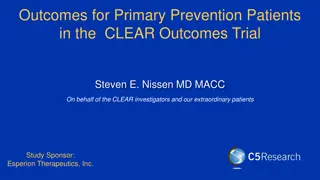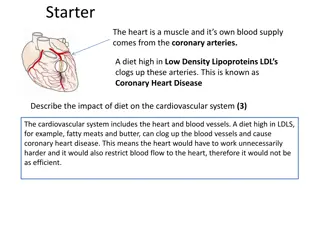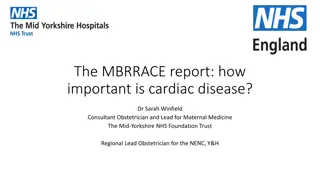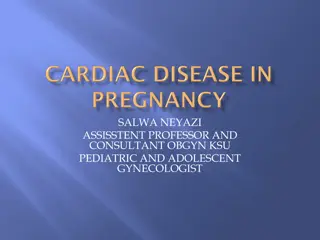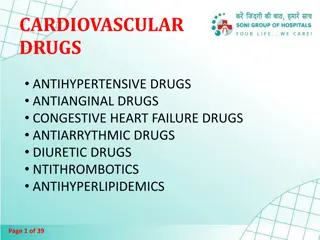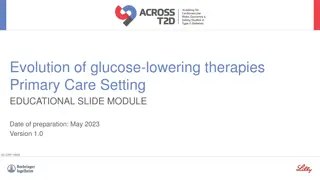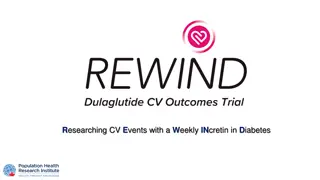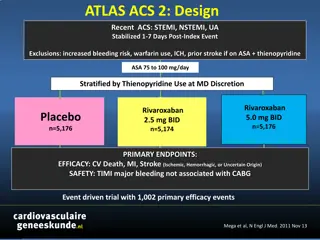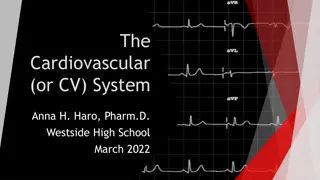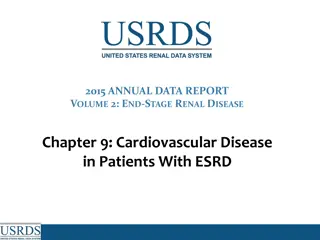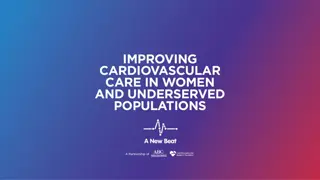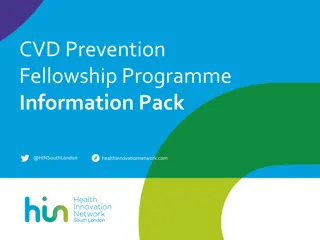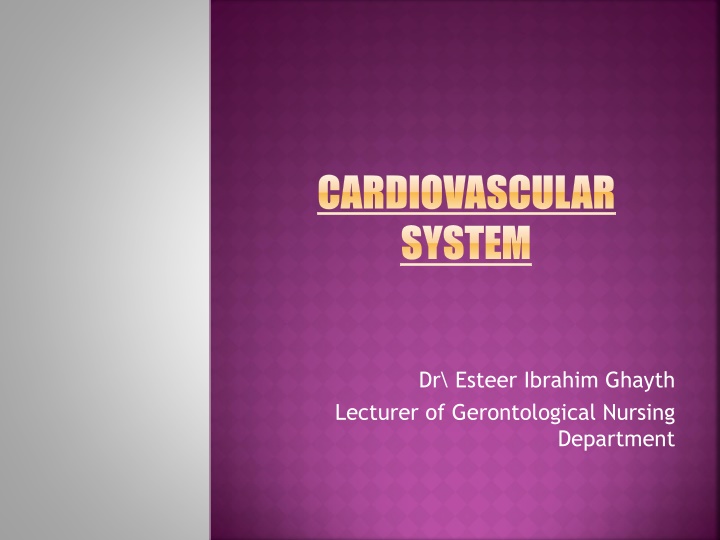
Cardiovascular System in Elderly Care
Explore the intricacies of the cardiovascular system, its anatomy, functions, age-related changes, and common disorders in the elderly. Learn about the crucial role of the circulatory system in supplying nutrients, oxygen, and fighting diseases for optimal health.
Download Presentation

Please find below an Image/Link to download the presentation.
The content on the website is provided AS IS for your information and personal use only. It may not be sold, licensed, or shared on other websites without obtaining consent from the author. If you encounter any issues during the download, it is possible that the publisher has removed the file from their server.
You are allowed to download the files provided on this website for personal or commercial use, subject to the condition that they are used lawfully. All files are the property of their respective owners.
The content on the website is provided AS IS for your information and personal use only. It may not be sold, licensed, or shared on other websites without obtaining consent from the author.
E N D
Presentation Transcript
CARDIOVASCULAR CARDIOVASCULAR SYSTEM SYSTEM Dr\ Esteer Ibrahim Ghayth Lecturer of Gerontological Nursing Department
OUT LINES: Introduction Anatomy of cardiovascular system function of cardiovascular system Age-related changes of cardiovascular system Effect of changes
OUT LINES: Common disorders related to CVS in the elderly: Heart Failure CoronaryArtery Disease Angina Myocardial Infarction Hypertension Nursing care plan Patient and Family Teaching
I-INTRODUCTION The cardiovascular system is a complex network of the heart, blood vessels and blood. It's job is to deliver nutrients to the body and remove tissues. A t the center of the cardiovascular system is the heart--a four chambered pump that dispenses blood to the arteries. The arteries carry nutrients and oxygenated blood to the body's tissues. The veins return de-oxygenated blood to the heart, where the cycle repeats itself thousands of times a day. byproducts from the
FUNCTION OF CARDIOVASCULAR SYSTEM Transporting Oxygen and Removing Carbon Dioxide One of the most important functions of the circulatory system is to supply oxygen to all the cells in the body. Every cell in the body requires a constant supply of oxygen to stay alive. Because most of the cells are not in contact with air, the circulatory system must supply them with oxygen.
FUNCTION OF CARDIOVASCULAR SYSTEM Transporting Nutrients and Removing Wastes A second critical circulatory system is to supply all the cells in the body with nutrients and energy. After food is digested in the stomach, it migrates through the intestines, where nutrients from food are absorbed into the bloodstream. function of the
FUNCTION OF CARDIOVASCULAR SYSTEM Fighting Disease In addition to nutrients and oxygen, the blood also carries around important disease-fighting cells. The organs of the immune system, such as the spleen, create many types of specialized cells that can kill foreign cells trying to invade the body. The circulatory system is responsible for transporting these cells from the immune system to all other parts of the body.
FUNCTION OF CARDIOVASCULAR SYSTEM Transporting Hormones Hormones are crucial chemical signals that the body uses to communicate with itself. Hormones control many things such as growth, the reproductive cycle and glucose metabolism. Hormones are created in one part of the body, such as the brain or the liver, and then must be transported to another part of the body by the cardiovascular system in order to deliver their message.
FUNCTION OF CARDIOVASCULAR SYSTEM Regulating Body Temperature The cardiovascular system also plays a role in regulating body temperature. If body temperature rises too high, blood vessels close to the skin dilate, increasing in size. The larger surface area of blood vessels close to the skin means more heat is conducted across the skin into the air. Conversely, if body temperature drops, the blood vessels constrict, decreasing in size. The smaller surface area of blood vessels next to the skin causes less heat to be lost across the skin and retains more heat in the body.
AGING CHANGES: Heart: The heart has a natural pacemaker system that controls the heartbeat. Some of the pathways of this system may develop fibrous tissue and fat deposits. The natural pacemaker (the SA node) loses some of its cells. These changes may result in a slightly slower heart rate. A slight increase in the size of the heart, especially the left ventricle, is not uncommon. The heart wall thickens, so the amount of blood that the chamber can hold may actually decrease despite the increased overall heart size. The heart may fill more slowly.
AGING CHANGES: Heart changes cause the ECG of a normal, healthy older person to be slightly different than the ECG of a healthy younger adult. (arrhythmias), such as atrial fibrillation, are more common in older people. They may be caused by heart disease. Abnormal rhythms Normal changes in the heart include deposits of the "aging pigment," lipofuscin. The heart muscle cells degenerate slightly. The valves inside the heart, which control the direction of blood flow, thicken and become stiffer. A heart murmur caused by valve stiffness is fairly common in the elderly.
AGING CHANGES: Blood vessels: Receptors called baroreceptors monitor the blood pressure and make changes to help maintain a fairly constant blood pressure when a person changes positions or is doing other activities. T he baroreceptors become less sensitive with aging. This may explain why many older people have orthostatic hypotension, a condition in which the blood pressure falls when a person goes from lying or sitting to standing. This causes dizziness because there is less blood flow to the brain. The capillary walls thicken slightly. This may cause a slightly slower rate of exchange of nutrients and wastes.
AGING CHANGES: The main artery from the heart (aorta) becomes thicker, stiffer, and less flexible. This is probably related to changes in the connective tissue of the blood vessel wall. This makes the blood pressure higher and makes the heart work harder, which may lead to thickening of the heart muscle (hypertrophy). The other arteries also thicken and stiffen. In general, most elderly people have a moderate increase in blood pressure.
AGING CHANGES: Blood: The blood itself changes slightly with age. Normal aging causes a reduction in total body water. As part of this, there is less fluid in the bloodstream, so blood volume decreases. The speed with which red blood cells are produced in response to stress or illness is reduced. This creates a slower response to blood loss and anemia. Most of the white blood cells stay at the same levels, although certain white blood cells important to immunity (neutrophils) decrease in their number and ability to fight off bacteria. This reduces the ability to resist infection.
EFFECT OF CHANGES Normally, the heart continues to pump enough blood to supply all parts of the body. However, an older heart may not be able to pump blood as well when you make it work harder. Some of the things that make your heart work harder are: Certain medicines Emotional stress Physical exertion Illness Infections Injuries
COMMON DISORDERS RELATED TO CVS IN THE ELDERLY: Heart Failure Introduction: Heart failure can significantly decrease quality of life and functional ability, In addition to causing death for elderly. Definition of Heart failure is a condition that occurs when the heart is unable to pump enough blood to meet the body's metabolic demands.
1- DISENGAGEMENT THEORY OF AGING Symptoms of heart failure Edema (general or dependent) Fatigue Poor exercise tolerance Dyspnea on exertion Paroxysmal nocturnal dyspnea Orthopnea Altered mental status (e.g., confusion, especially in the elderly)
2- ACTIVITY THEORY OF AGING Notes: For many patients, dyspnea on exertion is the earliest symptom. Dyspnea on exertion may result in a change in functional status of the older adults. Older adults may also experience a change in mental status, especially confusion.
2- ACTIVITY THEORY OF AGING Disorders that increase the risk of developing heart failure include: Angina MI (myocardial infarction) Diabetes (uncontrolled) Hypertension Coronary artery disease
3- CONTINUITY THEORY Diagnostic Tests: Test that help identify heart failure include: Electro-cardiography (ECG) Chest X-ray Cardiac catheterization Echocardiography and Laboratory blood test
3- CONTINUITY THEORY Medical Treatment: Treatment involves decreasing volume overload with the use of diuretics. Diuretics decrease total blood volume and circulatory congestion. Potassium loss (i.e., hypokzalemia) must be monitored closely in elderly patients receiving diuretics. Symptoms of weakness, muscle cramps, and numbness or tingling in the extremities. hypokalemia include
The hypotension, vomiting, diarrhea, constipation, polyuria and impotence. Digoxin is used in the management of heart failure to strengthen myocardial contractility. While on digoxin therapy, serum digoxin levels must be monitored. Therapeutic digoxin levels range between 0.5 - 2 ng/mL. adverse reactions dizziness, include headache, postural nausea,
Symptoms of toxicity include anorexia, nausea, visual disturber s, abdominal pain, and bradycardia or other arrhythmias. If these symptoms are observed, the drug is withheld and the physician notified. Older adults are at greater risk for toxicity because of the kidney's decreased ability to excrete the drug.
Using the Nursing Process to Care for a Patient With Heart Failure: Assessment: The physical assessment provides important informa- tion about the patient's symptoms. Patients suspected of having heart failure must have pulse rate and rhythm, blood pressure, and respirations monitored. Assessment may reveal exertion, episodes of nighttime breathing difficulties, and difficulty breathing when lying down. The elderly patient may be confused or exhibit a change in mental or functional status dyspnea, especially on
Nursing Diagnoses: The following nursing diagnoses may be appropriate for the patient with heart failure: Decreased Cardiac Output myocardial contractility Fluid Volume Excess related to sodium or water retention Activity Intolerance related weakness, fatigue Ineffective Breathing Pattern related to dyspnea, decreased lung expansion Risk for Ineffective Management of Therapeutic Regimen related to lack of knowledge of disease process, treatment regimen, (specify) Other diagnoses may be appropriate to meet individual needs. related to altered to dyspnea, muscle drug therapy, other
ANOTHER THEORIES OF AGING PROCESS Planning and Implementation: Care of the patient with cardiovascular disease is aimed at reducing the workload of the heart, increasing myocardial eliminating edema. Decreased Cardiac Output. In heart failure the heart is unable to pump forcefully enough for ade- quate amounts of blood to reach the systemic circulation causing a decreased cardiac output. contractibility, and
Nursing Interventions for Deceased Cardiac Output:- Assess vital signs(for increased respiratory and heart rates for narrowing pulse pressure) and mental status Assess heart rate and rhythm. Report any irregularities or a heart rate less than 60 or greater than 100 beats/minute. Auscultate lung sounds. Note the extent of dyspnea. Note any decrease in mental alertness or thought processes. The head of the bed is kept elevated and the patient in a semi- or high Fowler's position and give him supplemental oxygen to help him breathe more easily. Weigh the patient daily at the same time and in the same type of clothing. Encourage the patient to avoid straining during defecation. Straining increases venous return and Increases the workload of the hear .A stool softener may be needed to prevent straining. Administer medications, and monitor closely for adverse drug reactions.
Fluid Volume Excess. Fluid volume excess must be reduced if heart failure is to be managed. The physician usually orders a diuretic to promote diuresis and loss of excess fluid. The patient is monitored for adverse reactions to the medications such as hypokalemia, nausea, vomiting, tingling or numbness in the extremities, headache, diarrhea, constipation. Dietary sodium is restricted to approximately 2 to 3 g/day. Foods high in sodium are avoided, and no salt is added to foods.
Activity Intolerance. Patients with acute or wors- ening heart failure may become short of breath with minimal exertion. Ineffective Breathing Pattern. Respiratory rate, depth, and pattern are monitored every 2 to 4 hours. The nurse checks the lung sounds for crackles, wheezes, or diminished breath sounds.
Evaluation and Expected Outcomes Successful care outcomes: No evidence of insufficiency Maintenance of stable weight with no 'evidence of edema Decreased episodes of dyspnea Respiratory rate, rhythm, and depth and breath sounds within baseline parameters Participation in self-care and social activities Expression of increased knowledge about the disease process, medication regimen, or other (specify) can provide the following symptoms of circulatory
V- CORONARY ARTERY DISEASE Introduction: Coronary artery disease (CAD) is the most common disorder affecting the heart. More than 50% of deaths of individuals older than 65 years of age are caused by coronary artery disease. The coronary arteries supply blood and oxygen to the heart muscles. With age, the arteries, including the coronary arteries, accumulate yellowish plaques of cholesterol, lipids, and other debris on the inner surfaces of the vessels. This condition is called atherosclerosis. The walls of the medium-size and large arteries become thickened, causing the lumen (ie, opening) of the vessel to narrow.
V- CORONARY ARTERY DISEASE ANGINA Angina is caused by atherosclerotic heart disease. The most prominent symptom of angina is chest pain. The chest pain with angina typically is severe and causes a feeling of tightness, pressure, or suffocation. The pain may radiate down the left side of the body to the neck, jaw, shoulders, or arms. The pain of angina may result from: Exercise or physical exertion (eg, climbing stairs) Exposure to cold Eating a large meal (ie, pain occurs as the blood is diverted to the digestive system and away from the heart) Stress
V- CORONARY ARTERY DISEASE ANGINA Risk factors for coronary heart disease:- Aging High blood pressure .Elevated blood pressure Smoking :cigarettes Diabetes mellitus (hyperglycemia ) Obesity Stress Lack of exercise Family history of a myocardial infarction
V- CORONARY ARTERY DISEASE ANGINA Treatment: Treatment for angina is aimed at increasing the oxygen supply to the heart muscle and decreasing the heart's oxygen demands. This is accomplished through the use of medication and patient education. Surgical treatment may be necessary if the' medication regimen fails to control the angina.
V- CORONARY ARTERY DISEASE ANGINA Drug Therapy: The nitrates are the most significant drugs used to manage angina pectoris. These anti angina drugs relax the smooth muscle layer of arterial blood vessels causing vasodilatation (ie, increase in the size of the blood vessels). Vasodilatation increases the blood flow to the affected area, resulting in complete or partial relief of pain and other symptoms associated with angina. The nitrates may be administered sublingually, transdermally, or orally. Calcium channel blockers (eg, diltiazem, verapamil, nifedipine) are also used to treat chronic stable angina or hypertension. Side effects of calcium channel blockers include peripheral edema, dizziness, lightheadedness, nausea, skin rash, fever, and chills.
V- CORONARY ARTERY DISEASE MYOCARDIAL INFARCTION MI (Myocardial Infarction) occurs when areas of the heart are deprived of blood, causing tissue death and destruction. Symptoms indicating an MI include chest pain (not relieved by rest or by nitroglycerin). The pain occurs suddenly over the (lower) substernal area and is the most common symptom. The pain is often severe and unrelenting. The diagnosis after an MI is made through laboratory studies such as:- Serum enzyme and isoenzyme determinations. Electrocardiogram and echocardiogram.
V- CORONARY ARTERY DISEASE MYOCARDIAL INFARCTION Treatment: Treatment is aimed at reducing the pain, stabilizing the heart rhythm, and reducing the work load of the heart. Analgesics are given to relieve the pain. Oxygen, cardiotonic drugs, Antiarrhythmic drugs usually 'administered in the acute stage. The patient is 'admitted to the cardiac care unit and placed on a cardiac monitor. and anticoagulants are
USING THE NURSING PROCESS TO CARE FOR A PATIENT WITH CORONARY ARTERY DISEASE Assessment: When assessing the patient for problems of the coronary arteries pain is the most prominent symptom. Have the patient describe the pain-its onset, location, severity, and duration. The nurse checks: The vital signs (ie, respirations, and temperature). Vital signs are used to establish a baseline for future comparison. blood pressure, pulse,
USING THE NURSING PROCESS TO CARE FOR A PATIENT WITH CORONARY ARTERY DISEASE Nursing Diagnoses: The following nursing diagnoses may be appropriate for patients with coronary artery disease: Pain related to ischemia of the coronary vessels Decreased Cardiac Output related to changes in heart rate, rhythm, and conduction Risk for Decreased Tissue Perfusion related to decreased Cardiac Output Altered Sexuality Patterns related to pain, anxiety, other (specify) Risk for Ineffective Management of Therapeutic Regimen related to lack of knowledge of disease process, medication regimen, other (specify)
USING THE NURSING PROCESS TO CARE FOR A PATIENT WITH CORONARY ARTERY DISEASE Planning and Implementation For an older patient with an MI, Immediate hospitalization in a coronary intensive care unit is necessary during the acute phase. Cardiac monitoring and administration of medications A cardiac rehabilitation program may be helpful for those elderly recovering from an MI. Older adults are taught to administer medications, monitor diet, and maintain a balance between activity and rest. Vital signs (ie, pulse, respirations, and blood pressure) are taken before administering of any drug to help monitor the effects of the drug and any adverse reactions. Vital signs are checked every 4 hours or more often if necessary. patients with known CAD take supernal nitroglycerin before an ECG
USING THE NURSING PROCESS TO CARE FOR A PATIENT WITH CORONARY ARTERY DISEASE Patient and Family Teaching. the patient needs explanation of the disease process, ways to modify prescribed medication recommendations, symptoms reported, type and amount of activity allowed, and any special precautions necessary. The nurse may teach relaxation techniques to assist in managing stress. It is helpful for the patient to enroll in a cardiac rehabilitation program, particularly after an MI. teach life style modification to reduce cardiac risk risk regimen, that factors, the dietary should be
VI- HYPERTENSION Definition: Hypertension is a sustained elevation in blood pressure. "Systolic pressure is greater than 140 mmHg or the diastolic pressure is above 90 mmHg. Causes: The exact cause of essential hypertension is un known. In addition to age-related changes, contributing factors in elderly patients include family history, diabetes mellitus, race, physical inactivity, obesity, high fat diet. Secondary hypertension diseases , diabetes mellitus , neurological disorder, and dysfunction of the thyroid pituitary, or parathyroid gland. may result from, renal
Assessment of the Patient with Hypertension: Hypertension is often called the silent killer because few or no symptoms are apparent until complications develop as the result of vascular changes. With prolonged hypertension, The individual may complain of headache, dizziness, or tinnitus (ie, ringing in the ears). Other symptoms include disturbances, and nocturia. Frequent assessment of the blood pressure is important. nosebleeds, visual
ALTERNATIVE MEDICINE:- Red pepper: Improves circulation. Plays an important role in the rebuilding of blood cells, and detoxification. Feeds the heart with nutrients. Prevents heart attacks and other heart diseases. Stimulates proper blood flow, improves digestion and absorption process.
ALTERNATIVE MEDICINE:- Garlic: Promotes heart health. Prevents bad cholesterol. Good cholesterol level increases in the body. Prevents heart diseases associated with high cholesterol levels in the blood. Controls the blood pressure circulation and prevents blood platelet pool. and stimulates
ALTERNATIVE MEDICINE:- Cocoa: Is heart disease thanks to its contents and antioxidant that fights free radical damage. Contains magnesium (especially dark chocolate). "Almuseroort" Motherwort that promote heart health plant, as it is used in the production of many drugs for fighting heart disease. Hawthorn: unknown effectiveness in the prevention of health problems including angina, indigestion, high blood pressure and hardening of the arteries and congestive heart failure.
DRUG-DRUG INTERACTION (DDI):- Patients with cardiovascular diseases are particularly vulnerable to DDIs due to their advanced age, polypharmacy and the influence of heart disease on drug metabolism. The DDI potential for a particular cardiovascular drug varies with the individual, the disease being treated, and the extent of exposure to other drugs. Potential for drug interaction is higher with cardiac drugs and there are reports on potential DDIs in cardiology department from India. There are no studies reporting actual incidence of DDIs in the Indian setting. Hence, the present study was designed to assess the incidence and pattern of DDIs in hospitalized cardiac patients in a tertiary care hospital, with the assessment of reaction characteristics, outcome and causality.
FOOD DRUGS INTERACTION:- When recommended consistent on a daily basis. Avoid sudden changes in the intake of foods and vitamins containing vitamin K. Consider how much vitamin K you get throughout the day. Read labels of vitamins, minerals and food supplements to identify products high in vitamin K. In general, leafy green vegetables, certain beans and oils are high in vitamin K. Examples of foods and beverages high in vitamin K. taking anticoagulants, to keep it may K be vitamin intake
NURSING INTERVENTIONS:- Decreased Cardiac Output Nursing Diagnosis Decreased Cardiac Output May be related to Altered myocardial contractility/inotropic changes Alterations in rate, rhythm, electrical conduction Structural changes (e.g., ventricular aneurysm) valvular defects,

